Sometimes good things can drop right into one’s lap when least expected. This is what happened when Ben, a good buddy of mine, generously gave me a vintage watch with a curious history including a last minute rescue from the trash compactor, but I am jumping ahead in the story. First an introduction…
Meet a very old Baume & Mercier chronograph that looks like it survived many adventures. This Swiss brand began making watches the 1830s, but this one’s story starts about 100 years later. Ben contacted me since I was “the watch guy with the watch blog” to ask about an old wristwatch that some of his friends found while cleaning out a deceased relative’s belongings.
A few things piqued my interest when he told me about it. The previous owner was a 94-year-old military aviator who flew in the late 1940s and 1950s. Aviators don’t usually wear junk since they rely on the accuracy of their watches for navigation, precision and picking up chicks off base.
Physical clues hinted that the watch may indeed have more than just a few years of age on it. The case dimensions of only 35 mm wide excluding the crown told me that the watch was pretty old. Years ago, men’s watches were not the behemoths that they are today. See how easily it fits into the palm of my hand?
The crystal is a domed plastic which can be easily polished if it becomes scuffed. This is before synthetic sapphire became the scratch-free choice for watchmakers.
The pitted metal on the case, crown and pushers show the ravages of time. Maybe this watch was worn on Navy missions. If it could only talk, I am sure it would have some tales to tell.
Because the domed crystal acts like a convex reflector, this watch was difficult to photograph. The curved edges showed the lights, the room and sometimes even the photographer. The crystal is also scuffed obscuring the dial detail.
The dial surface seems to have a rainbow effect like oil on water. Below you can see green and pink gradients on the dial surface.
Some of the amazing detail only became known to me after examining my photos at extreme magnification. I did not see the bright blue tachymeter scale until later. Neither did I see the bright green gunk in the lugs. My guess is some exposure to salt water, but who knows.
To have the watch identified, I removed the case back to expose the beautiful and well-preserved movement. I actually spent more time looking at the internal gears than the dial. They become more fascinating the more we zoom in. See for yourself.
For a watch without a gasket or a water resistance rating, the inside looked much better than I expected, considering the crud just a few millimeters outside of the case.
The movement is a Landeron 48, and there are oh so many parts… I wonder which ones need replacing?
Luckily, there were millions of these movements made so getting donor parts might be possible… in the hands of a capable watchmaker.
The gear teeth look sharp as ever.
The outer case has a model number… 902.
Inside the case back lives the serial number. Not all of that number is shown here until I get more information on this item including its potential value.
The brand historians at Baume & Mercier were incredibly helpful telling me what they could about it. This model was introduced in the early 1940s. It is a normal chronograph with modern start and stops pusher functions as one would expect. It can still be serviced, but no telling how much that would cost. The watch currently does not run. And, most importantly, it is a relatively rare timepiece that “cannot be acquired or reproduced”. That last sentence is interesting and I am not sure exactly what to make of it. I’ll update this blog the more I find out about it. Thank you to Ben and the original owners who let me obsess about this relic.


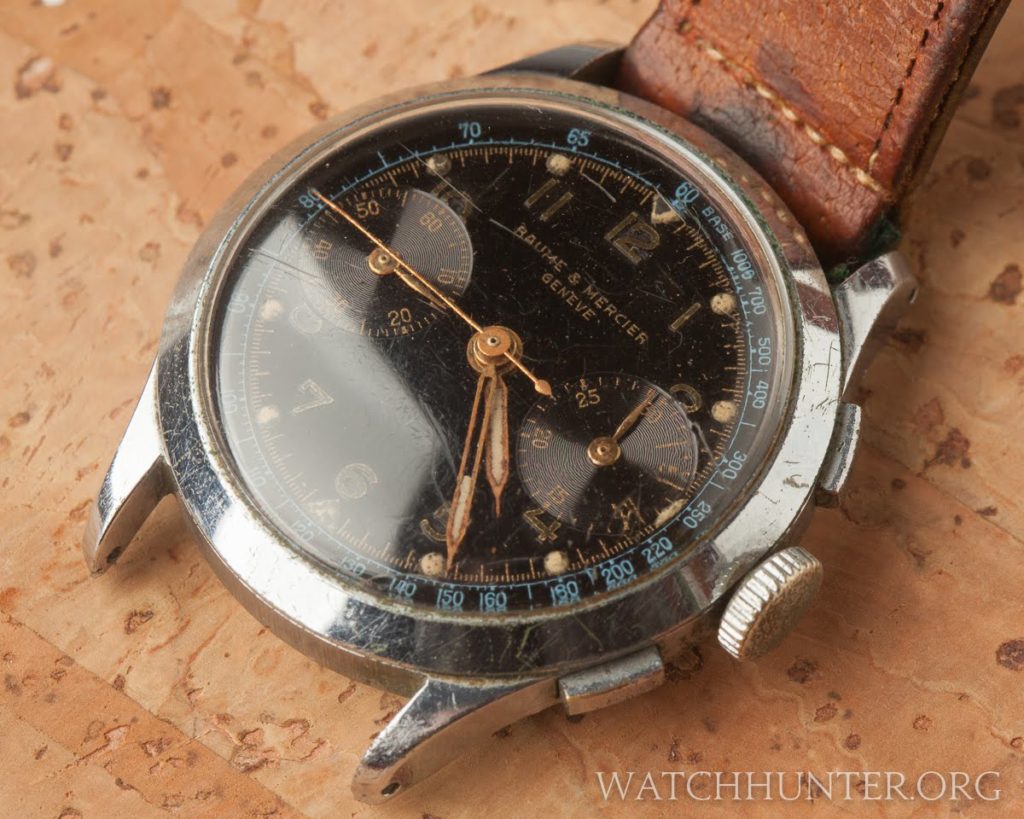
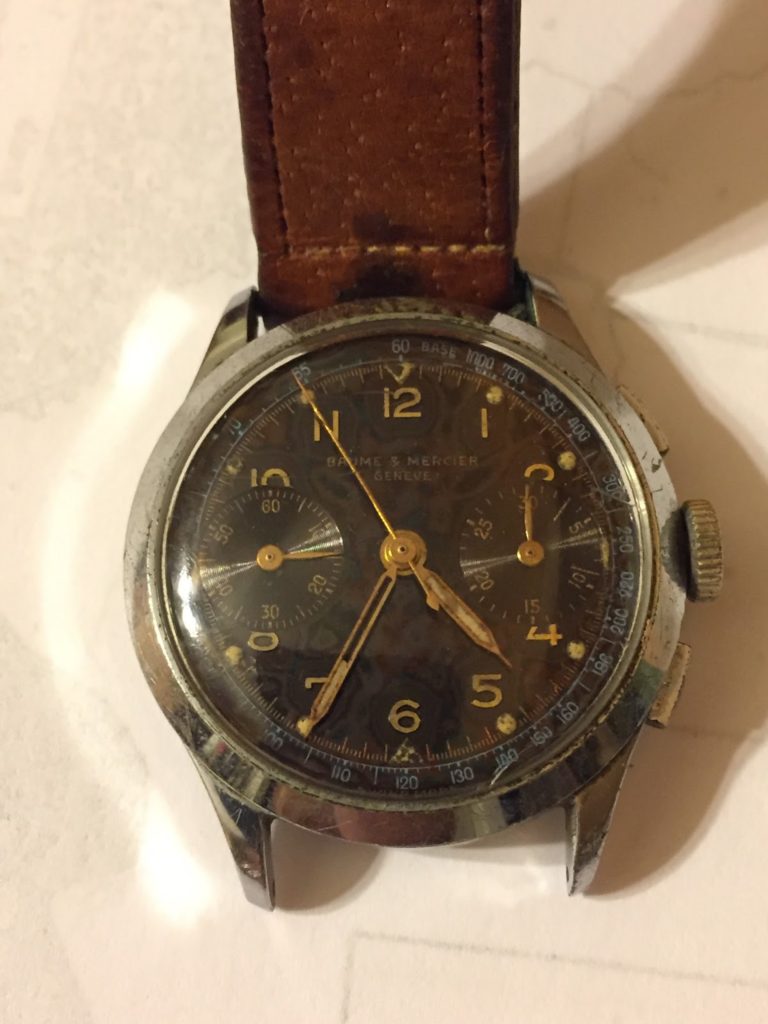
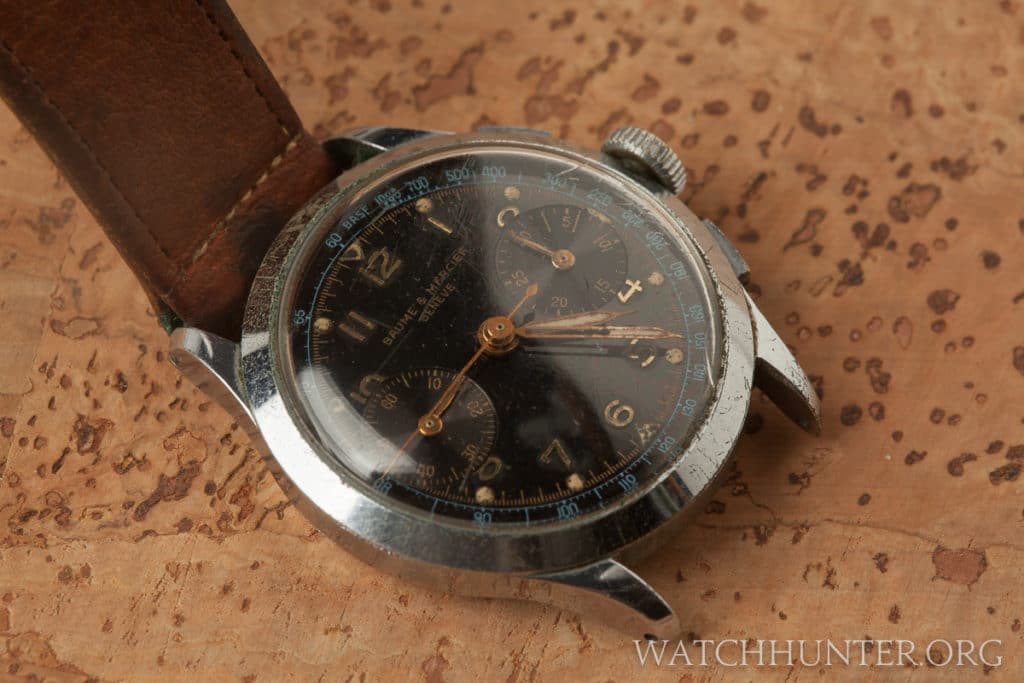
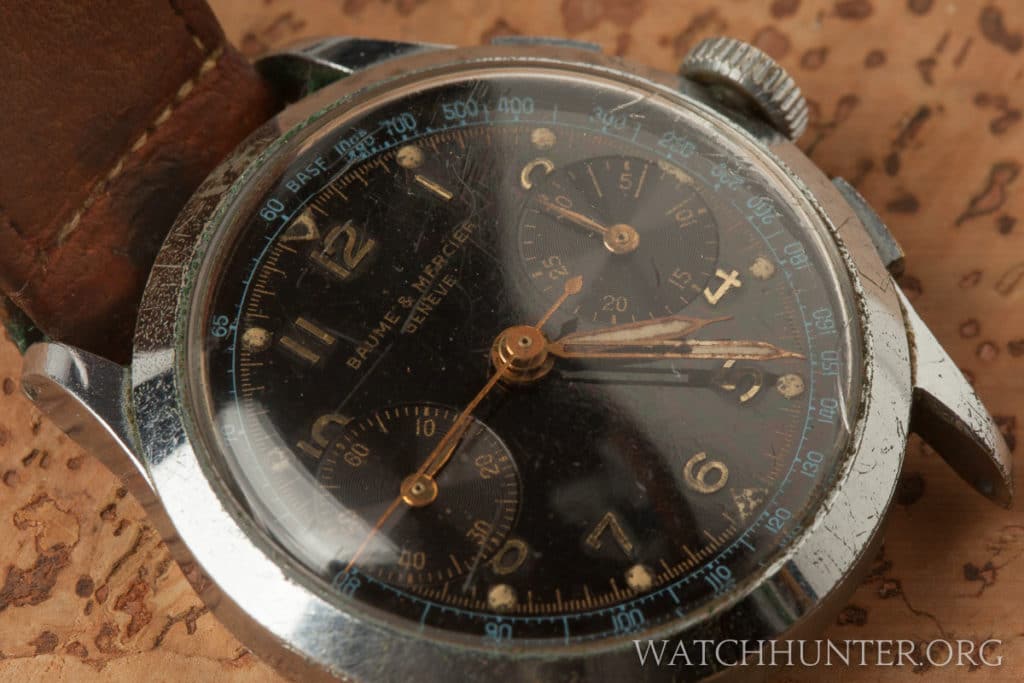
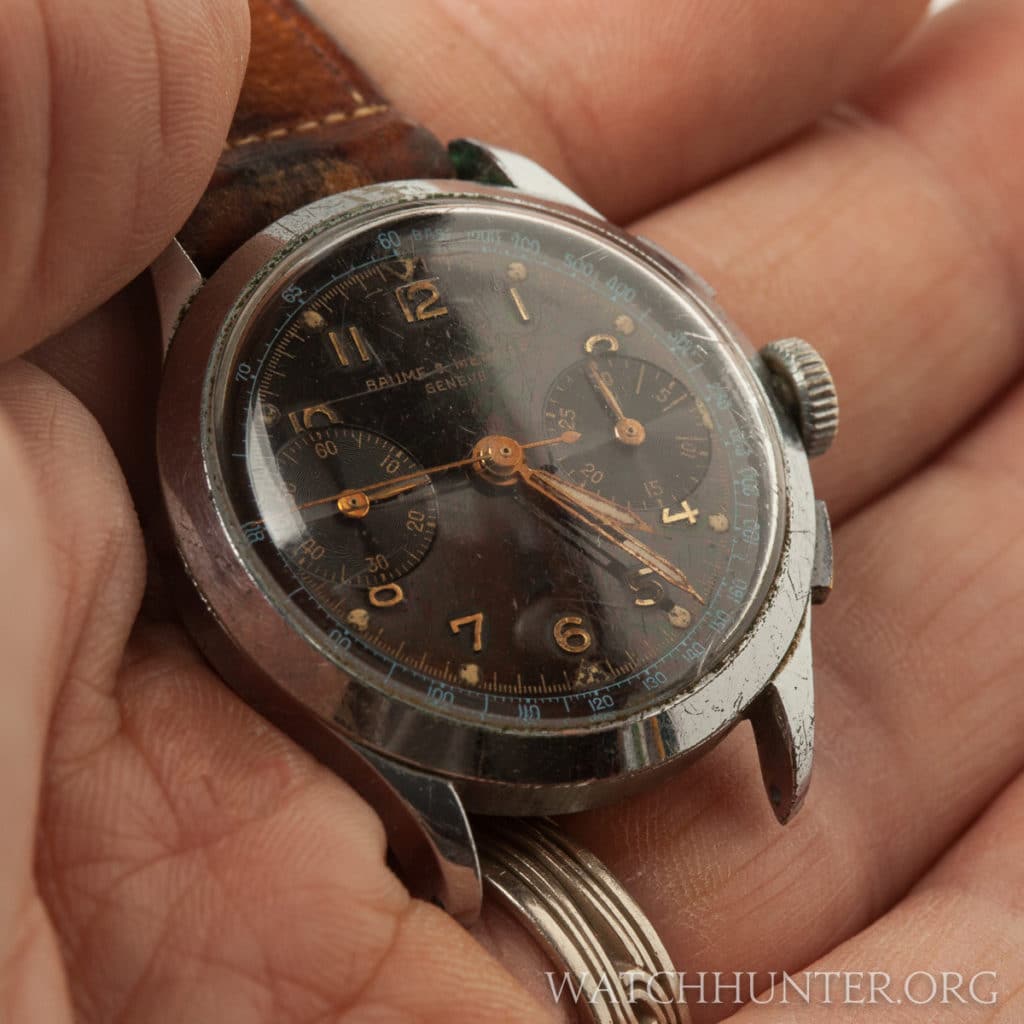
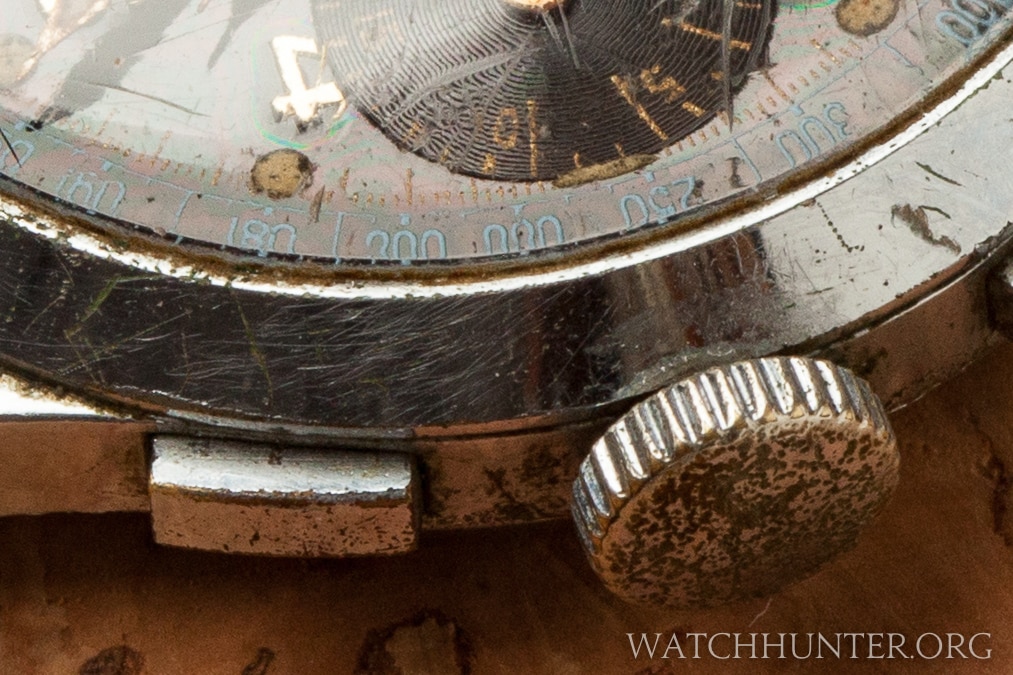
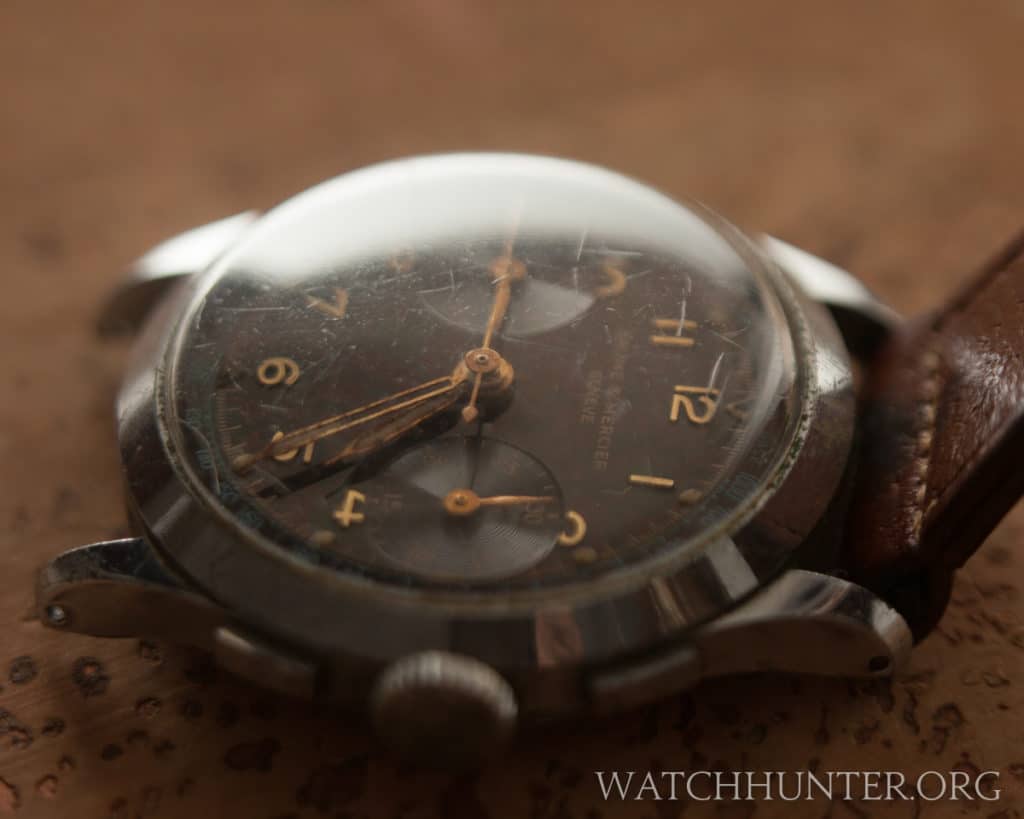
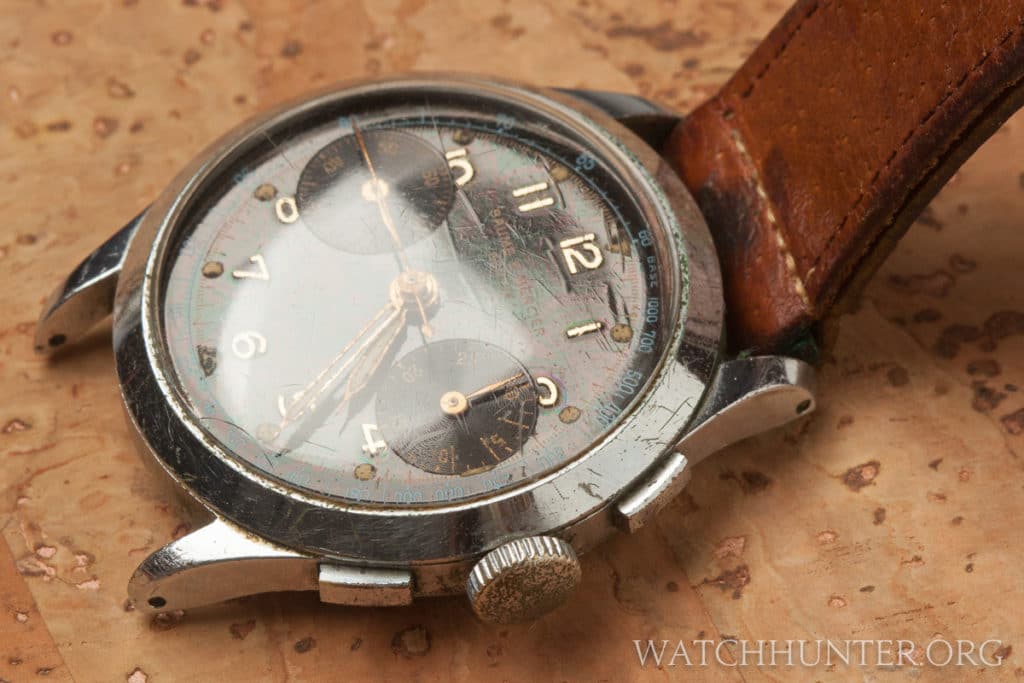
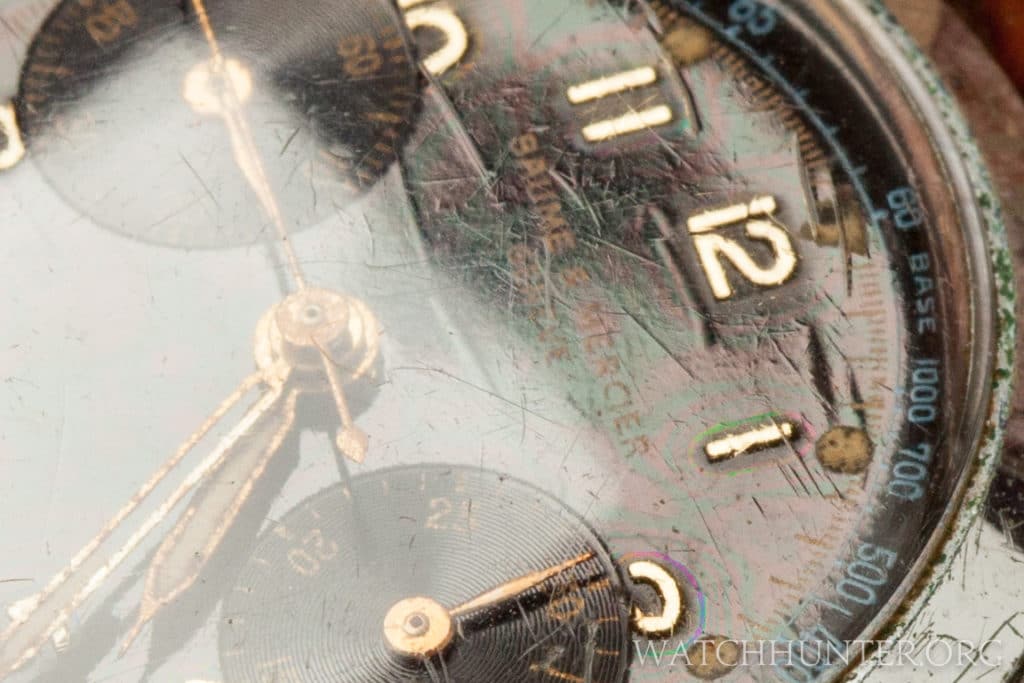
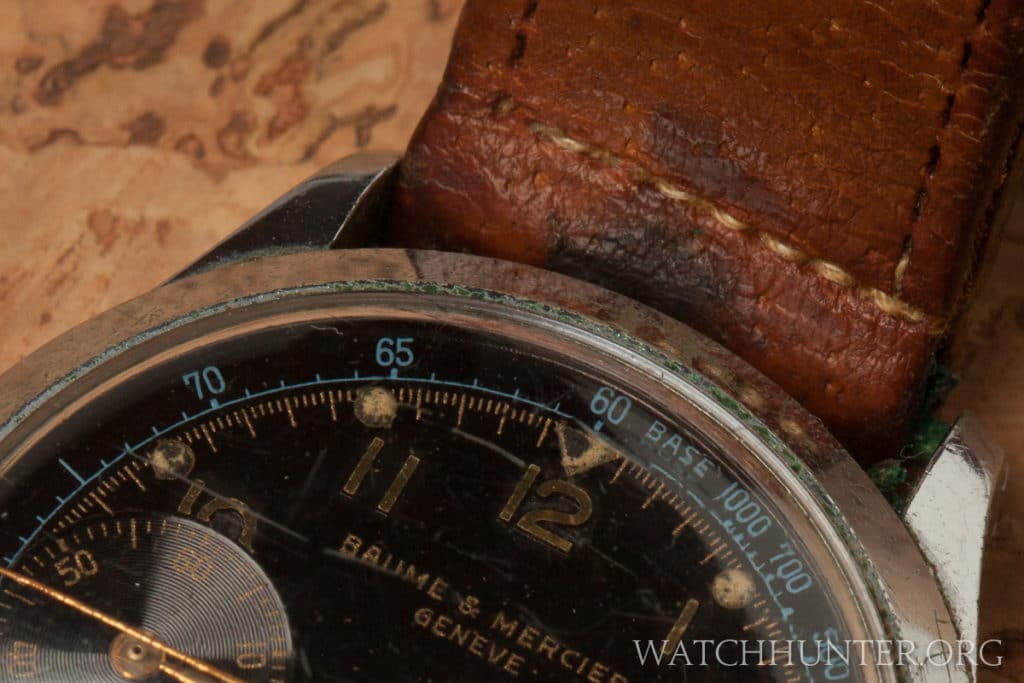
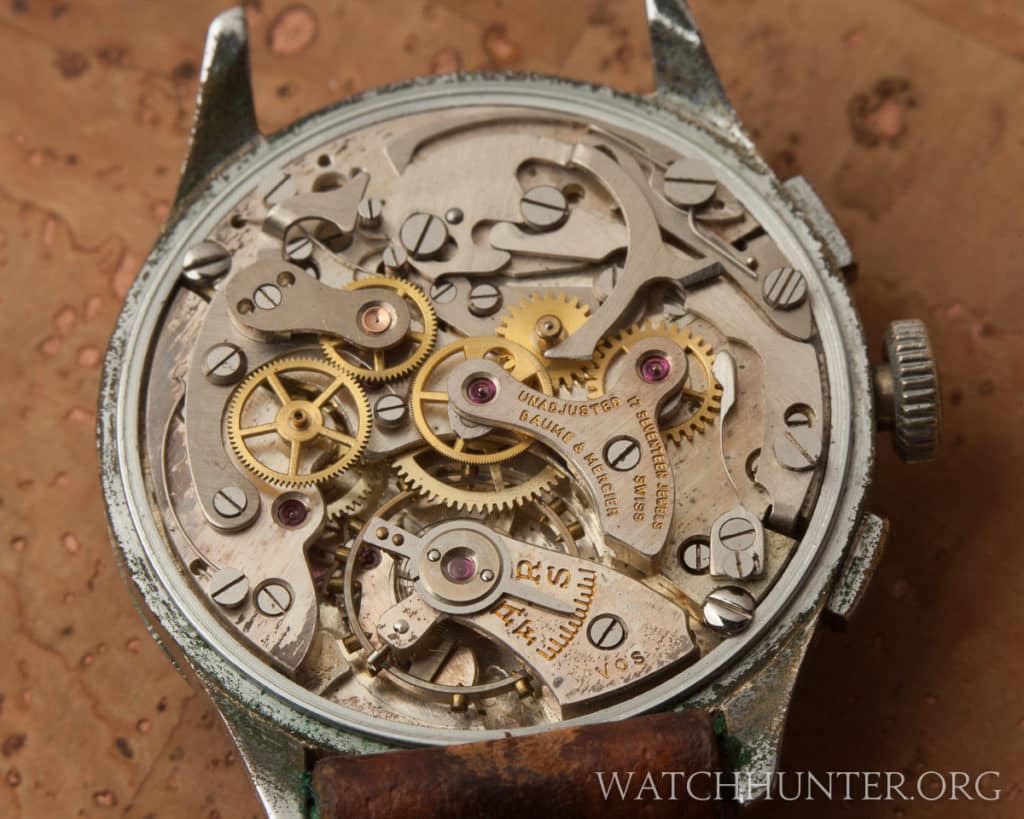
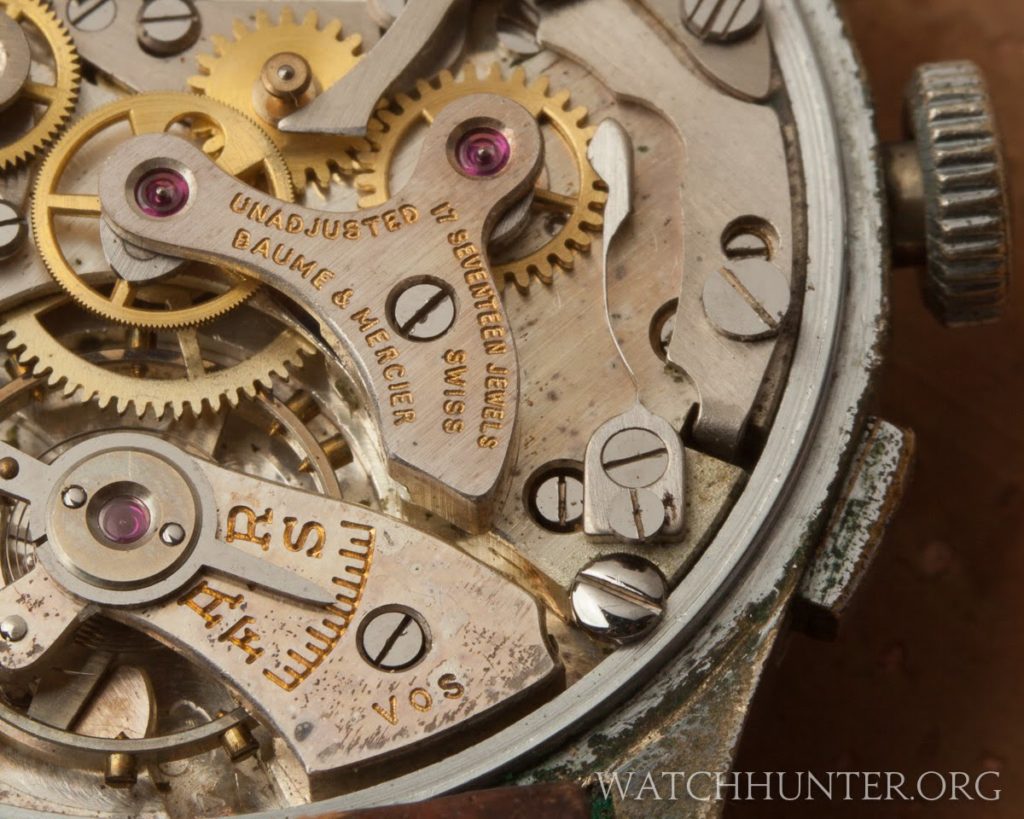
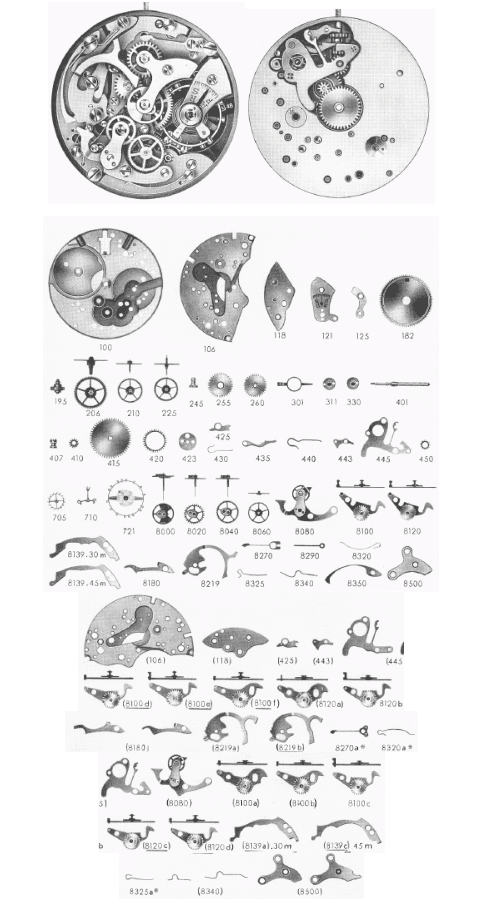
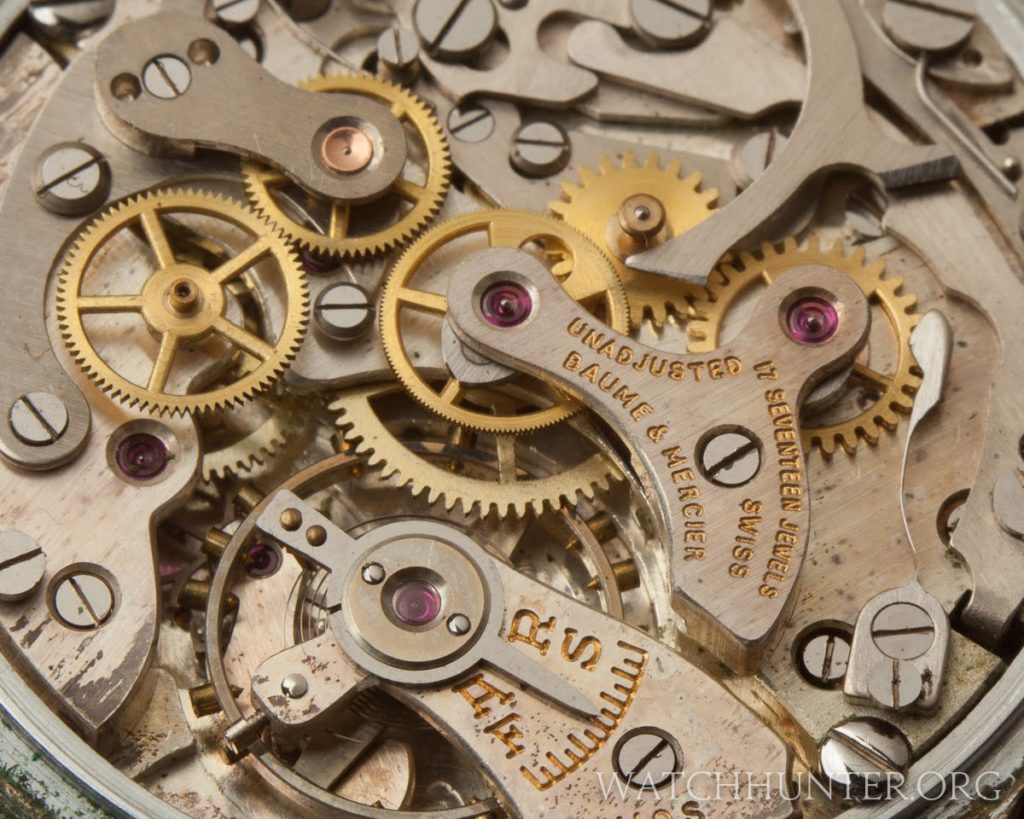

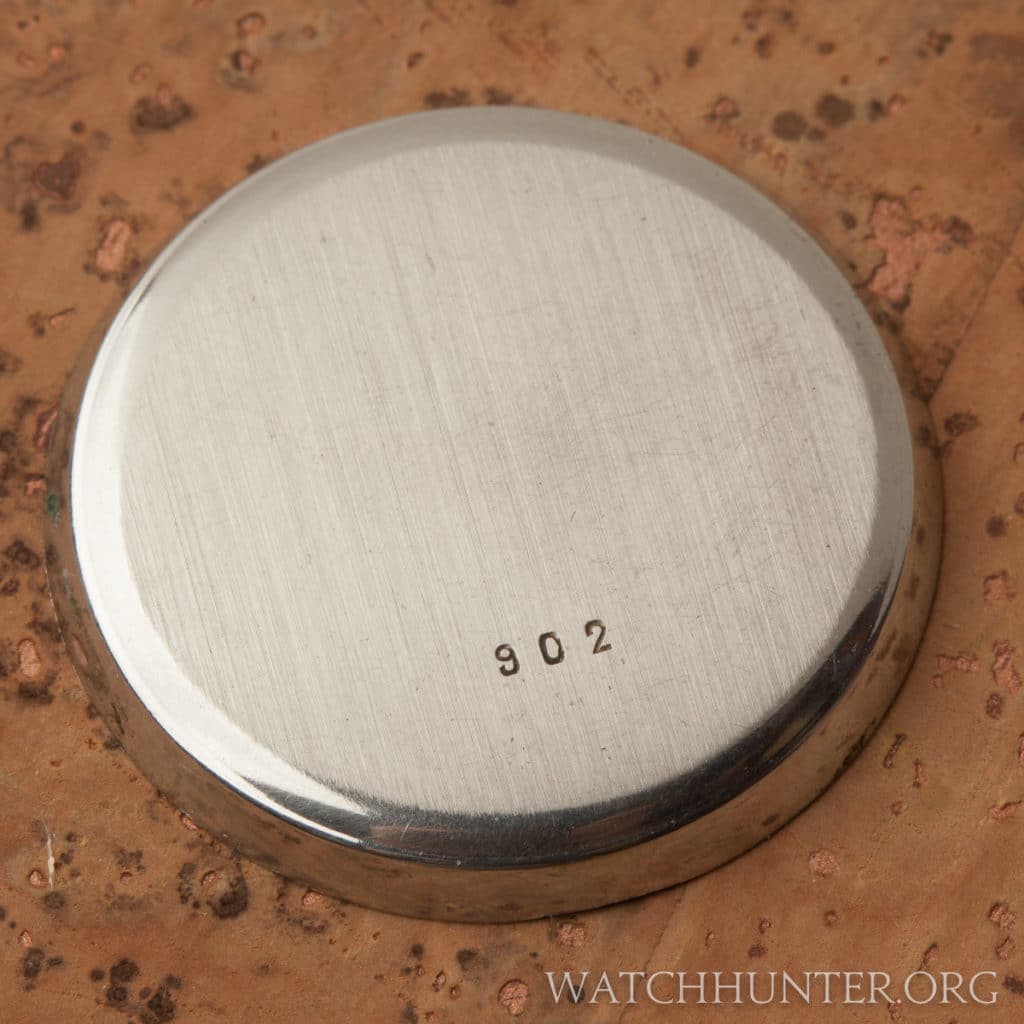
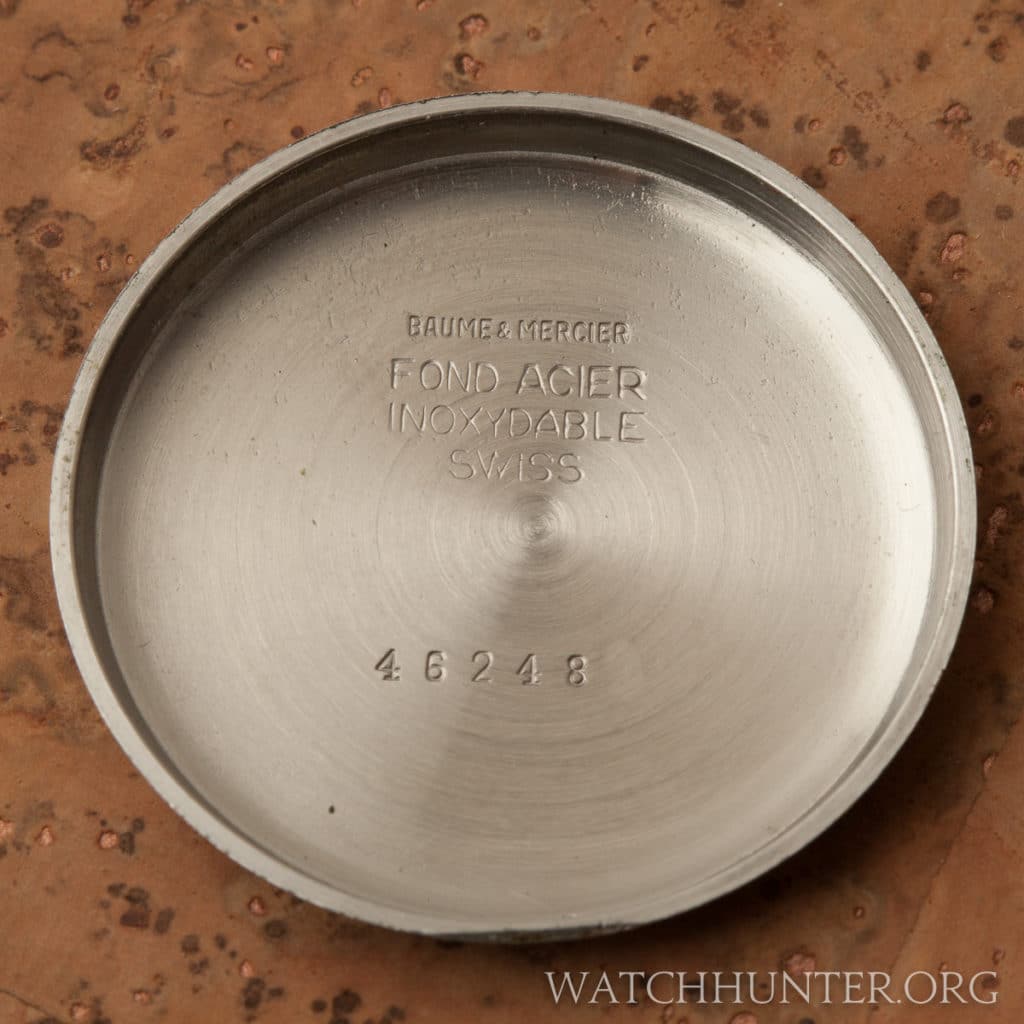
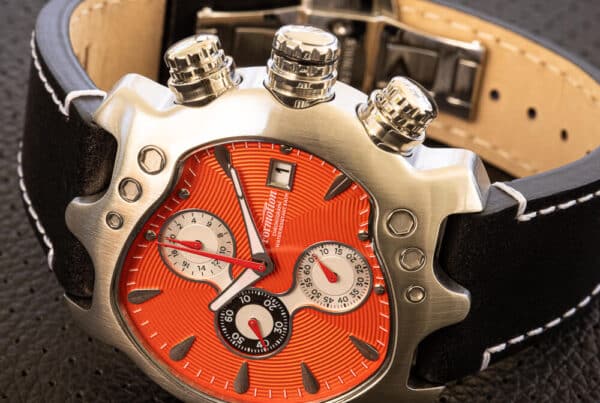
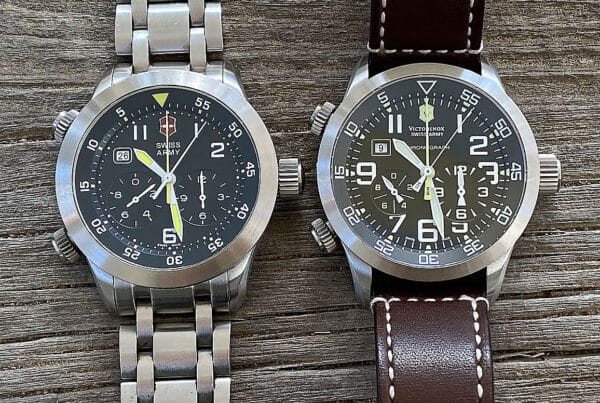
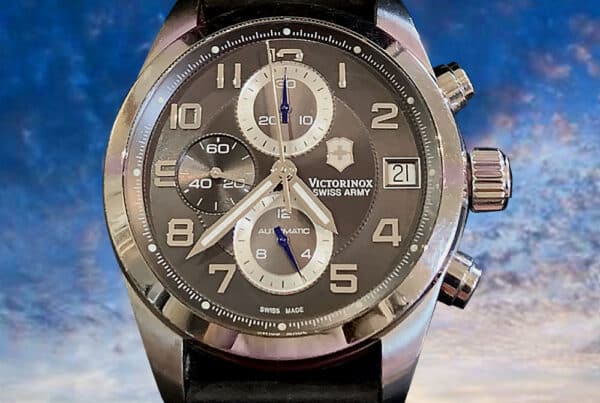
Hello,
why the balance bridge have the hallmark VOS? VOS is the hallmark of Sheffield movements , an old watch manufacture in Swiss
Hi Eric. Hmmm… That is a great question and one that I do not know how to answer. Any info that I got came directly from Baume & Mercier. They did not mention that VOS hallmark, and I am the least qualified to answer about old Swiss movements. I no longer own the watch so any sleuthing will have to come from the existing images. Got any theories?